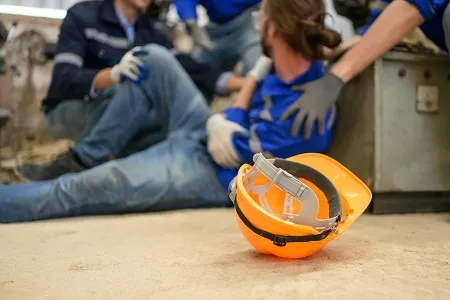Workplace inductions are vital for introducing new employees to a company.
During inductions they’ll learn how a company really works, who’s who in the firm and, most importantly, its safety procedures and processes.
While the practical information regarding the operation of the organisation is essential to ensuring ensure productivity from each new staff member, the safety aspect will ensure their well-being at work, the efficient running of your organisation and, of course, that you’ve protected them – and your company.
Many organisations underestimate the importance of inductions. They simply rely on new employees to “learn as they go” or give them a quick tour and consider induction complete, but workplace inductions are about so much more.
Typically, inductions focus on processes, but also policies, things such as anti-discrimination policies security procedures and safety, as well as other vital information needed for a successful transition into the company.
There are three basic phases to any induction process:
- Pre-Induction: This occurs prior to a new employee starting work
- Induction: This is the actual transition into the work place
- Post-Induction: This period is about adjustment to the new role having already started.
Pre-Induction
Once the employee sets foot on the work premises or, for example, construction site for the first time, their induction stage will begin. During this period they should be provided with a tour of the physical premises, given access to communication and computer systems and be provided with all appropriate training activities required to perform their job. During this time, employers will need to distribute and review safety standards and procedures as well as how to handle hazards and emergency situations. Other elements of this stage should include a review of discrimination and harassment policies and any other relevant rules, laws and regulations. The induction phase has no set period and varies according to the new employee’s role and the company they will be working for. It could last just a few hours, a day or two or even a week.
- Information sent to new employee. New employees should receive a letter or email detailing their start date, access to various buildings, arrangements for parking and a Day One itinerary, if possible.
- Notification to other employees. Managers or supervisors should ensure other employees are aware of the impending arrival of a new staff member. Ensure everyone is aware of their role and where the new employee fits in the corporate structure as well as how they can aid the new employee.
- Prepare the workstation Contact the new employee prior to their arrival to confirm a number of details including the proper spelling of their name (or any naming preferences) for items such as business cards and preferences for their workspace. Ensure all support and materials are provide and their work station, office or area of work is clean and ready for their arrival.
- Create a Welcome File Providing essential information regarding computer access, contacts and itineraries etc for the first day and other pertinent information will ensure new employees have all the information they need to kick off their role with your company, starting with an informed and productive first day.
Induction
Once the employee sets foot on the work premises or, for example, construction site for the first time, their induction stage will begin. During this period they should be provided with a tour of the physical premises, given access to communication and computer systems and be provided with all appropriate training activities required to perform their job. During this time, employers will need to distribute and review safety standards and procedures as well as how to handle hazards and emergency situations. Other elements of this stage should include a review of discrimination and harassment policies and any other relevant rules, laws and regulations. The induction phase has no set period and varies according to the new employee’s role and the company they will be working for. It could last just a few hours, a day or two or even a week.
Post – Induction
Once a new employee has made the transition into his or her new workplace, additional post-induction steps should be taken, including following up on their experience in the first few days/weeks of their new role. Unfortunately, many firms do not hold any post-induction system, yet this is as vital as the previous two stages of induction. ### Why follow up with new employees? If an employer fails to follow up on a new hire, it could lead to lower productivity, frustration by the mew employee or his/her fellow employees and a higher turnover rate because an employee who finds himself/herself in an unhappy or unsafe environment may be forced to leave. However, there are several other reasons to follow up with post-induction queries by management, including to ensure your new employee understand their role, that they have the tools and equipment to complete it successfully and safely and for them to understand what is expected of them. In order to incorporate a successful post-induction procedure into your firm’s processes, employers or managers can use questionnaires, surveys or discussion. Whichever option you choose, it should contain enough broad answer to ensure it cover any issues that may have arisen after induction Of course, a manager could simply sit down and have a chat with the new employer and elicit the same answers. Each stage in the induction process is vital and none is more important than the other in ensuring the safe and successful transition of a new employee into a workplace.
Do you have any questions or great tips to share?
Induct for Work – the only online induction system you would need to run online inductions.



